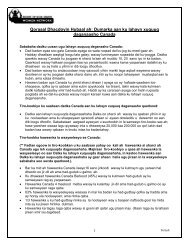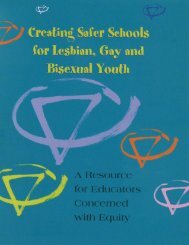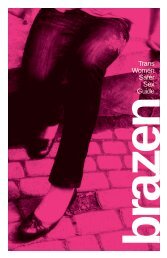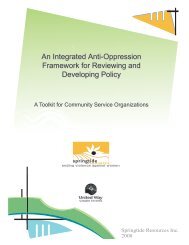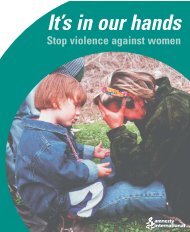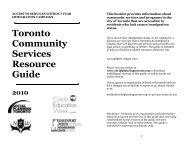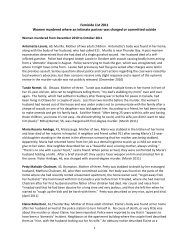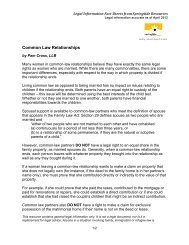Little eyes, little ears - Agence de la sante publique du Canada
Little eyes, little ears - Agence de la sante publique du Canada
Little eyes, little ears - Agence de la sante publique du Canada
You also want an ePaper? Increase the reach of your titles
YUMPU automatically turns print PDFs into web optimized ePapers that Google loves.
how violence against a mother shapes children as they grow5. Unhealthy family rolescan evolve in homes withdomestic violenceRoles in abusive families reflect how each person adaptsand copes with the secret, confusing, and sometimesdangerous situation in which they live.Look on page 26 where we discuss family roles.8. A child's style ofcoping and survivalmay become problematicChildren's innate ability to adapt serves them well whentrapped with abuse, conflict, and violence. Strategiescan involve i<strong>de</strong>as (e.g., fantasizing about a better family);actions (e.g., running away); or, feelings (e.g., anger,guilt). Their actions and choices are survival skills:temporarily helpful adaptations to an unhealthy situation.But some, such as running away, create new problems.6. Abuse <strong>de</strong>stroys a child'sview of the world as asafe and predictable p<strong>la</strong>ceWe list on page 7 some of the distorted messages childrenmight learn from living with woman abuse. They could alsolearn that you have to <strong>de</strong>al with your problems by yourself,a<strong>du</strong>lts don't keep their promises, bad things happen nomatter how hard I try to be good, and life is not fair. Incontrast, children who grow up with encouragement,fairness, and safety can approach life with enthusiasm an<strong>de</strong>mbrace new opportunities.7. Abuse co-occurs withother stresses and adversitieswith negative effectsResearch consistently documents how domestic violencealmost never stands alone as the only problem or stress9, 11, 12, 13, 14, 15in a family. Family dynamics will probably beaffected by one or more of these other problems: parentalsubstance abuse or alcoholism, criminal behaviour andpossible incarceration of a parent, mental illness, poverty,resi<strong>de</strong>ntial instability, unemployment, and child abuse orneglect. Children may believe that one of these otherissues is responsible for the abuse against their mother.Look on page 24 for a discussion of coping.9. Children may adopt some ofthe rationalizations for abuseMale rationalizations for abuse can inclu<strong>de</strong> “I'm the man soI'm in charge” or “God <strong>de</strong>mands that I keep the family inline.” A child believing these i<strong>de</strong>as could b<strong>la</strong>me the womanfor her own victimization, see women as inferior, excusethe man's abusive behaviour, or even try to emu<strong>la</strong>te him.Such a child could grow up to justify or accept abuse inintimate re<strong>la</strong>tionships, workp<strong>la</strong>ce settings, or with friends.10. Children can believe thatvictimization is inevitable or normalMessages conveyed by violence can teach tolerance ofabuse and discourage help seeking. Some women clearlystay with their partners out of fear, knowing they'd beseriously injured, stalked or killed. Some believe “all menare like that so the next one won't be any better” or that“things will get better when he finds a job.” Girls may<strong>de</strong>velop low expectations of men or believe womenshouldn't expect happiness.11



